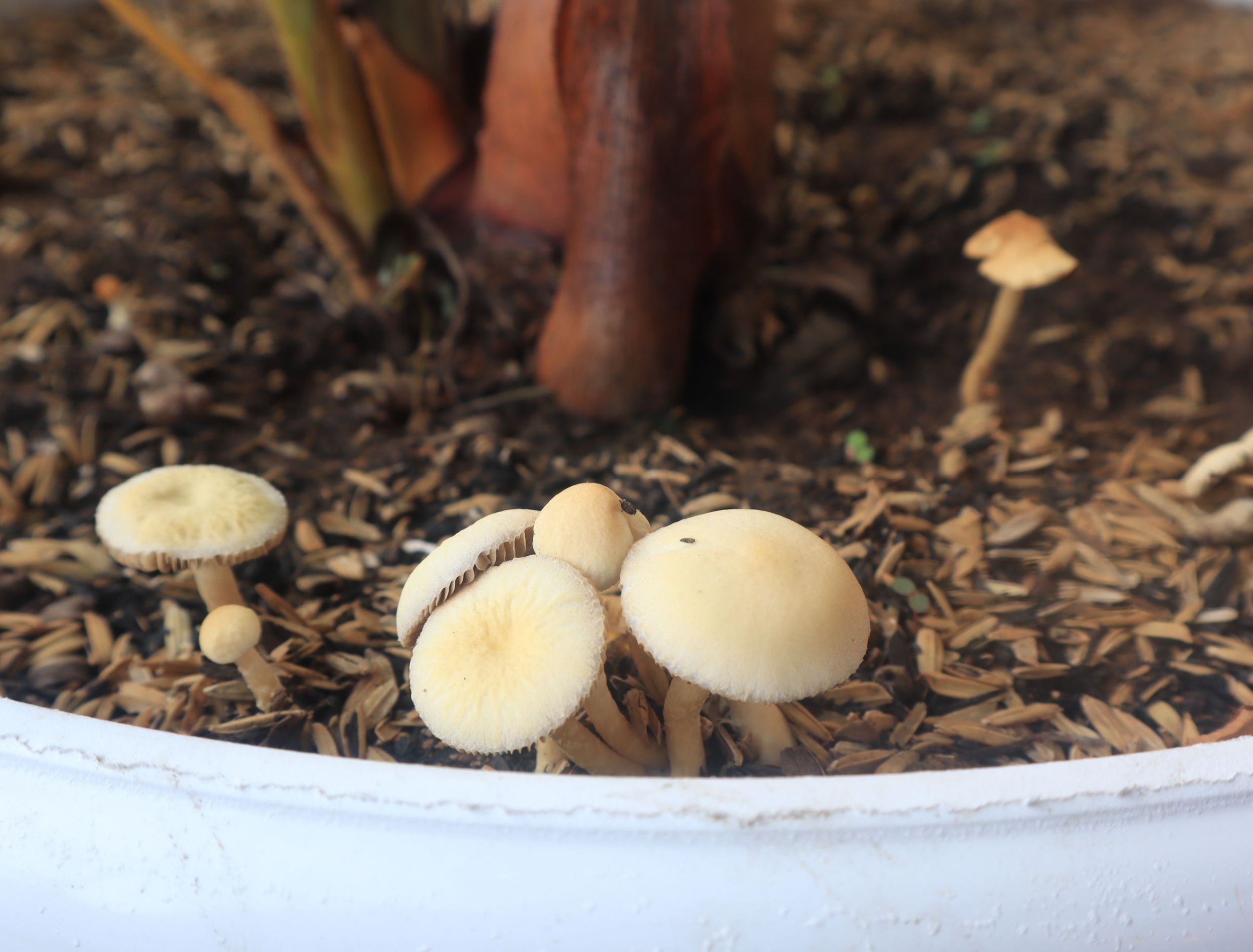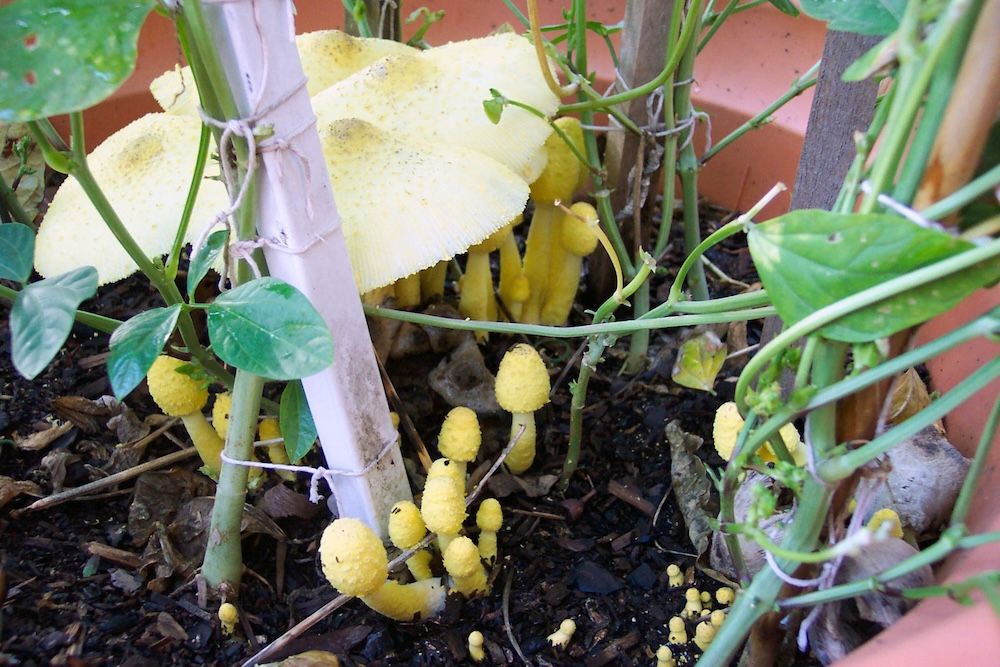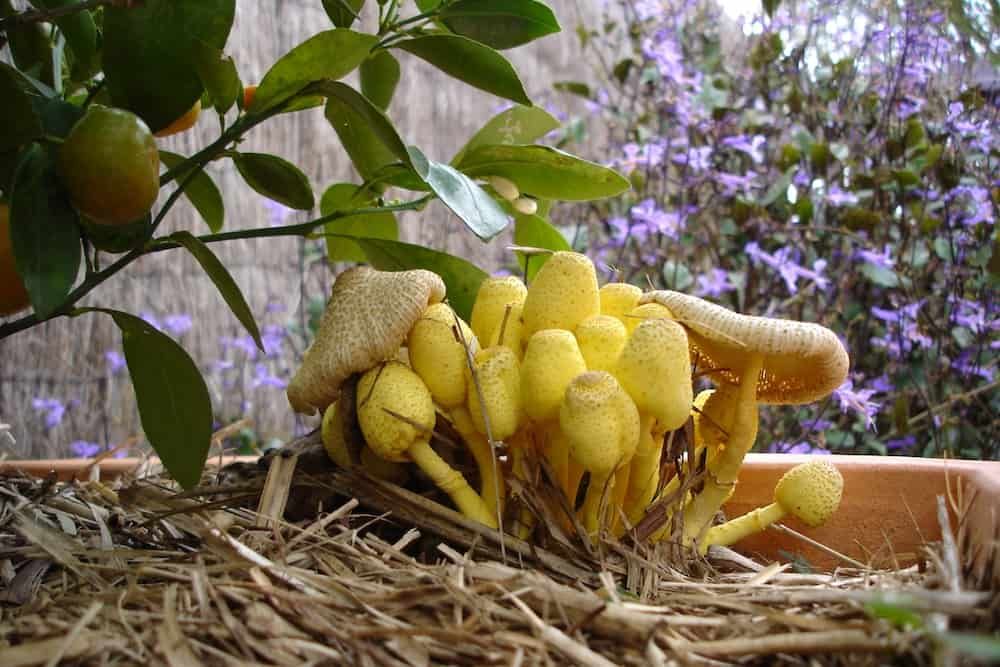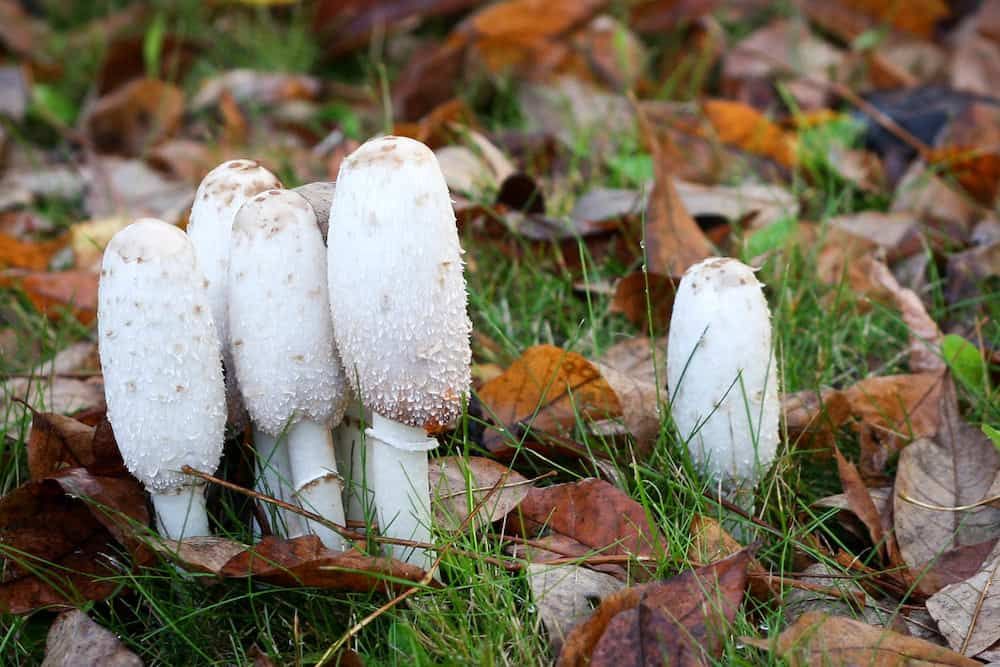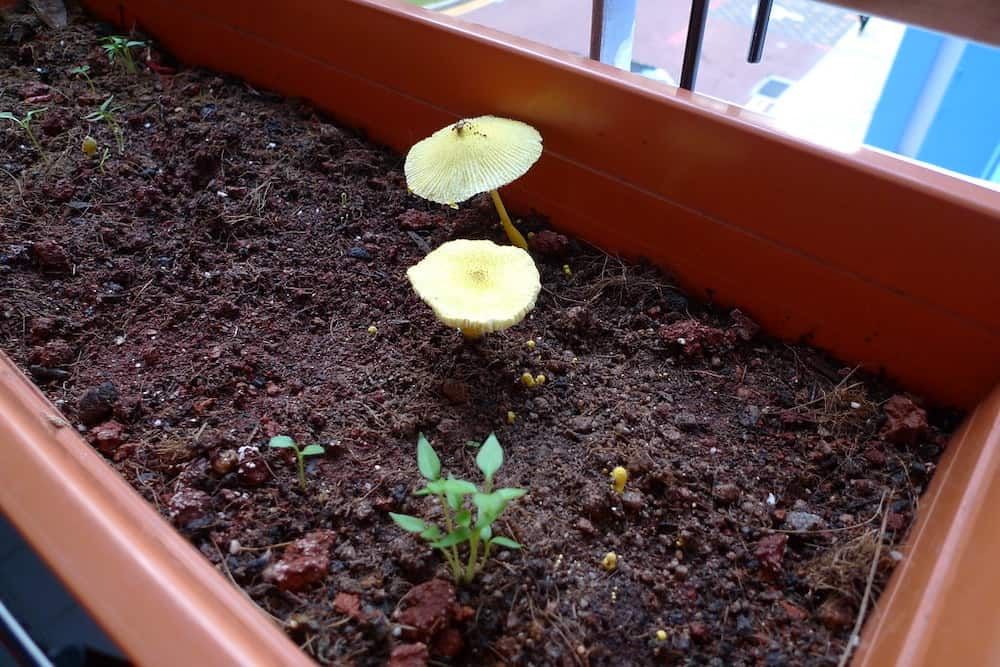You may be surprised to see mushrooms growing in your garden or potting soil since potting soils and mixes are supposed to be sterilized to kill harmful microbes and weed seeds. However, mushroom spores are constantly floating in the air, and they can start to grow if they land on moist soil. So, can you use potting soil with mushrooms in it? Or should you throw it out because the potting soil has gone bad?
Learn the different types of mushrooms that can grow in potting soils, why they grow, and what you can do about them.
Although most mushrooms that grow in potting soil are harmless to plants, some can be poisonous.
What Are Mushrooms?
Fungi with a fascinating life cycle
Mushrooms are fungi that need a warm, moist, and humid environment to grow. They have a fascinating life cycle that begins as spores and ends with the fruiting bodies known as mushrooms. The fruiting bodies are the reproductive part of the fungus and are released when the fungus is mature. There are a few reasons why mushrooms might grow in your potting soil:
- The soil is rich in organic matter, which mushrooms feed on.
- The soil is moist, which mushrooms need to grow.
- The location is warm and humid, which mushrooms prefer.
Mushrooms release millions of spores into the air, which are then carried by wind or water until they land in a suitable place to grow. If the conditions are favorable, the spores will germinate and grow into hyphae, which are tiny, thread-like structures. The hyphae then fuse to form a network called mycelium. Mycelium is the vegetative part of the fungus and is responsible for absorbing nutrients from the environment.
There are two main types of mushroom fungi:
|
Saprophytes |
Grow on dead or decaying organic matter. These mushrooms are harmless to plants and may even be beneficial, as they can help to break down organic matter and improve soil health. |
|
Parasites |
Infect and kill living organisms. |
Common Mushroom Fungi in Houseplants
The two kinds of mushrooms that you’ll see growing
The yellow houseplant mushroom and the shaggy mane are two common mushrooms that can grow in houseplants.
Yellow Houseplant Mushroom
The yellow houseplant mushroom (Leucocoprinus birnbaumii or Lepiota lutea) is the most common mushroom that grows in houseplants.
- It is a small, yellow mushroom with a cap that can grow up to 1½ inches tall and 2 inches in diameter.
- It is a saprophyte, which breaks down dead organic matter in the soil.
- It is not edible and can be poisonous if consumed.
Shaggy Mane
The shaggy mane mushroom (Coprinus comatus) is also called the lawyer's wig because of its white and shaggy fruiting body.
- It is a saprophytic mushroom that feeds on decomposing organic matter, both animal and plant.
- It is edible and has a flavor similar to asparagus.
- It should not be consumed with alcohol, as some of these mushrooms can contain coprine, which can cause nausea, vomiting, and sweating when mixed with alcohol.
What to do When You See Mushrooms in Your Potting Soil
How to handle fungi problems
When you see mushrooms in your potting soil, you have a few options:
|
Remove the mushroom caps |
Mushroom caps are like the seed pods of the fungus world. They contain the spores, the tiny reproductive units that allow mushrooms to multiply. Removing the mushroom caps as soon as you see them can prevent the spores from spreading and growing new mushrooms. This is only effective if you're quick about it. If you wait too long, the mushrooms will release their spores, and you'll have to start over. You can remove the mushroom caps by hand or with garden tools. Don’t touch the mushroom's gills, pores, ridges, or teeth, as this is where the spores are produced. If you do touch these parts, be sure to wash your hands thoroughly afterward. |
|
Scrape and sterilize the soil |
One way to remove mushrooms in your potting soil is to scrape off the top 2 inches of soil and replace it with sterilized soil. To sterilize the soil, you can bake it in the oven at 200 degrees Fahrenheit for at least 30 minutes or until it reaches 180 degrees Fahrenheit. Be careful not to overbake the soil, as this can harm your plants. However, this method may not work, as the fungal spores may be deeper in the soil. This means that the mushrooms could regrow even if you replace the top layer of soil. |
|
Change the soil |
You can change the soil if you want to eliminate mushrooms in your potting soil. This is the most effective method but also the most time-consuming and stressful for your plants. To do this, you'll need to remove all the soil from the pot, including the top layer where the mushrooms grow. Then, you'll need to sterilize the soil or replace it with new potting soil. Be sure to sterilize the pot, as spores could also lurk there. Finally, you'll need to transplant your plant into the new potting soil. Be careful not to damage the roots, which can stress the plant and lead to transplant shock. |
|
Change the conditions |
Changing the humidity, moisture, and temperature of your potting soil can make it difficult for mushroom spores to grow. However, if your plants and the mushrooms like the same conditions, this drastic change could also harm your plants. For example, if your plants need a lot of humidity and moisture, reducing the humidity and moisture in the potting soil could kill them. So, it's important to weigh the risks and benefits before trying to get rid of mushrooms by changing the conditions of your potting soil. |
|
Apply fungicides to the soil |
Fungicides are chemicals that can kill fungi, including the ones that cause mushrooms to grow in your potting soil. The American Phytopathological Society says that fungicides can help control fungal diseases, but you need to use a lot and apply them regularly. You can make your organic fungicide sprays or buy them online. If you use commercial fungicides, follow the directions on the label carefully, and don't use too much, or you could harm your plants. |
If you're looking for a more natural solution, you can try scraping off the top layer of soil where the mushrooms are growing. You can also try to reduce the humidity and moisture in the soil, but this could also harm your plants if they need those conditions to survive.
Mushrooms are fungi that release spores and grow in warm, moist, and humid conditions. They are not harmful to plants but can be unsightly and invasive.
Preventing or inhibiting mushroom growth can be either a short-term fix or a more intensive process that could harm your plant. Ultimately, the best way to deal with mushrooms in your potting soil is to prevent them from growing in the first place. Prevention is the key!

